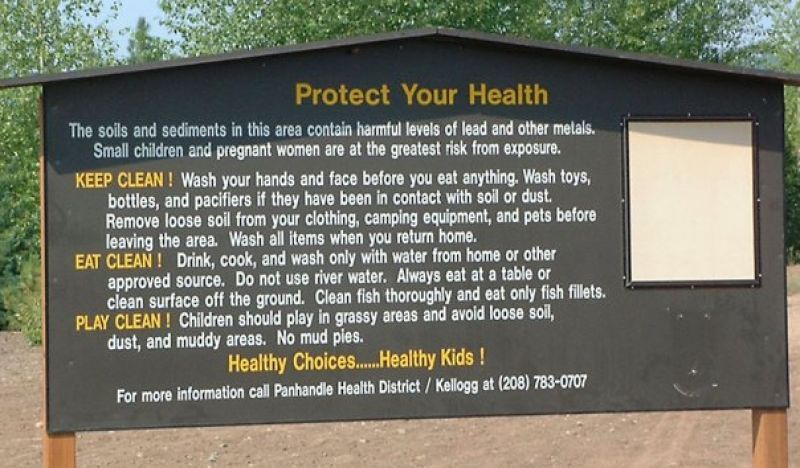bunker hill mining & metallurgical complex
The Bunker Hill Superfund Site, located in northern Idaho and eastern Washington, was listed on the National Priority List (NPL) in 1983. It is one of the largest and most complex Superfund sites in the country. The Site includes mining-contaminated areas in the Coeur d’Alene River corridor, adjacent floodplains, downstream water bodies, tributaries, and fill areas. It also encompasses the 21-square-mile Bunker Hill “Box†located in the area surrounding the historic smelting operations. The Bunker Hill Superfund Site is within one of the largest historical mining districts in the world. In 1883, commercial mining for lead, zinc, silver, and other metals began in the Silver Valley. Heavy metals contamination is present in soil, sediment, surface water, and groundwater from over 100 years of commercial mining, milling, smelting, and associated modes of transportation. The contamination has impacted both human health and environmental resources in many areas throughout the site. Entire communities have been built on top of old mine tailings. The principal sources of metals contamination were tailings generated from the milling of ore discharged to the South Fork Coeur d’Alene River and its tributaries or confined in large waste piles onsite; waste rock; and air emissions from smelter operations. Tailings were frequently used as fill for residential and commercial construction projects. Spillage from railroad operations added to contamination across the site. Tailings were also transported downstream, particularly during high flow events. They were deposited as lenses of tailings or as tailings and sediment mixtures in the bed, banks, floodplains, and lateral lakes of the Coeur d’Alene River Basin and in Coeur d’Alene Lake. Some fine-grained material washed through the lake and was deposited as sediment within the Spokane River flood channel. The estimated total mass and extent of impacted materials (primarily sediments) is over 100 million tons. This is dispersed over thousands of acres. Over time, groundwater also became contaminated with metals. Ore-processing facilities in Kellogg and Smelterville emitted contaminants into the air. Although both the lead smelter and zinc plant had recycling processes designed to minimize air-borne particulates, significant metals deposition and sulfur dioxide emissions still occurred. These emissions affected areas near the smelter and zinc plant, and greatly contributed to the denuding of surrounding hillsides. In 1981, smelter operations ended. Limited mining and milling operations continued onsite from 1988 to 1991, and small-scale mining operations continue today. After listing on the NPL in 1983, remedial investigations (RIs) and feasibility studies (FSs) at first focused on the 21-square-mile Bunker Hill Box. Those studies mainly focused on human health risks, particularly on reducing elevated blood lead levels in children. The human health effects from heavy metals exposure have been studied extensively at the Bunker Hill Superfund Site. Childhood lead poisoning was epidemic in the 1970s, with over 75 percent of children having blood lead above 40 micrograms per deciliter (µg/dL). Starting in 1996, additional human health and ecological studies were done in mining-contaminated areas outside of the Box. The contaminants of concern are chiefly metals. Affected media are soil, sediment, surface water, and groundwater. The primary source of metals in surface water is leaching and erosion of sediments impacted by tailings. Direct exposure to metals in soil and sediments is a source of risk for human and ecological receptors, including recreational users, subsistence users, migrating waterfowl and plants. Surface water quality exceeds applicable criteria for the protection of cold water biota in portions of the South Fork Coeur d’Alene River basin by up to 200 times the criteria for dissolved cadmium and as much as 90 times the criteria for dissolved lead and zinc. The most heavily impacted areas are without aquatic life. Other areas provide only partial support for fish and other aquatic species (e.g., they are suitable for migration but not spawning and rearing).
Hazardous Ranking Score
55 / 100
A score of 28.5 or higher qualifies a site for the Superfund National Priority List.Subscribe
Timeline
Contaminants & Health Effects
Census
368 |
People living within a 1 mile radius |
$42,921 |
Average Income |
172 |
Occupied homes |

